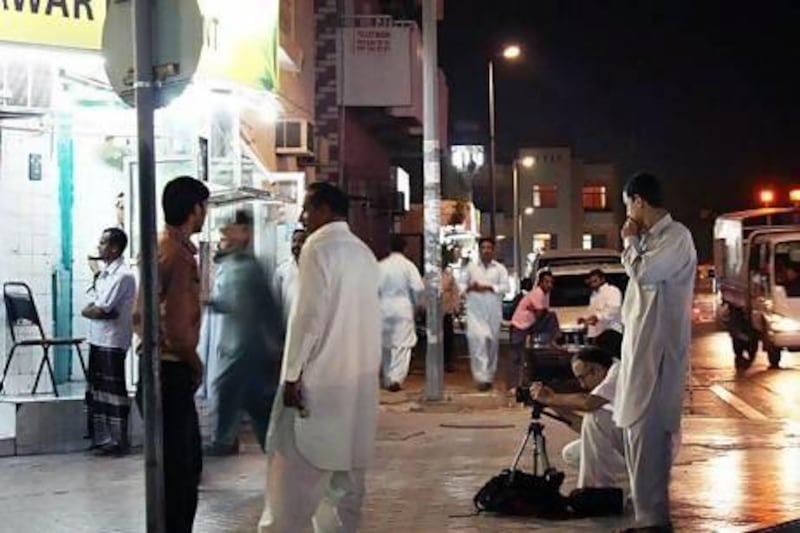DUBAI // It is one of the city’s most overlooked areas, but Hor Al Anz is home to the kind of vibrant community rarely seen elsewhere in Dubai.
In a country where most people drive rather than walk, researchers from UAE University have found the Deira neighbourhood has a rare and thriving street culture.
A study was carried out to discover the main areas where people meet and for what purpose.
A team set up time-lapse video cameras, as well as heat indexes, to locate the most popular areas, and from there took part in a series of people-watching expeditions.
“I’m interested in how people use urban public spaces, like streets, street corners and squares,” said Yasser Elsheshtawy, associate professor of architecture at UAE University.
“It’s interesting to see how people try to claim part of the city as their own. Street corners are meant for movement and utilitarian purposes, but in some places have been turned into a social space, almost like an outdoor living room,” he said.
“Potentially, lessons could be derived from that for urban design and planning.”
Hor Al Anz was built in the early 1970s as a neighbourhood for Emirati families. The district was named after Al Anz – a famous horse that belonged to Sheikh Saeed bin Maktoum, the former ruler of Dubai – and was comprised of traditional, one-storey government-issued homes.
However, over the last two decades, the majority of Emirati residents moved out to nearby neighbourhoods such as Mirdif or Rashidiya, and lower-income migrant workers moved in.
In his report, published in the Cities journal, Mr Elsheshtawy said there were still pockets of older Emirati men who visited the area they once called home, but on the whole, Hor Al Anz was now dominated by the Pakistani community.
In a bid to improve traffic flow into the neighbourhood there was a re-zoning and a one-way system introduced about 10 years ago. That had the side effect of widening some pavements and lengthening street corners.
One of the biggest hives of activity is a street corner on the main thoroughfare where the Peshawar Restaurant is based. Mr Elsheshtawy and his team nicknamed the area Peshawar Street Corner.
“It’s an unremarkable corner, but what happens there is quite remarkable, especially in the evenings,” he said. “It’s a place where people meet friends and sit and talk. Other times they gather in crowds outside the restaurant and watch the cricket on TV.
“In the daytime, it’s much more functional, where people go to work. But in the evening it’s much more vibrant and boisterous.”
He said the street was a place where low-income members of the community were able to socialise.
While in the rest of the city, particularly upper and middle-class neighbourhoods, the shopping mall was the key social space, many lower-income residents would not necessarily be able to afford to sit in cafes. Nor would they be allowed to gather in large groups in the corridors of malls.
Similarly, parks are also social spaces, but many charge an entrance fee that could exclude those on lower incomes.
It is not the first time Mr Elsheshtawy has highlighted less well known aspects of Dubai. His book, Dubai: Behind an Urban Spectacle, chips away at the surface of areas like Rashid Colony and Mina Bazaar.
“The purpose of my research is to map these places, identify them and study them further,” he said. “Particularly in this city, you wouldn’t normally think of streets as having an active social life. But it exists, if you look for it.”






